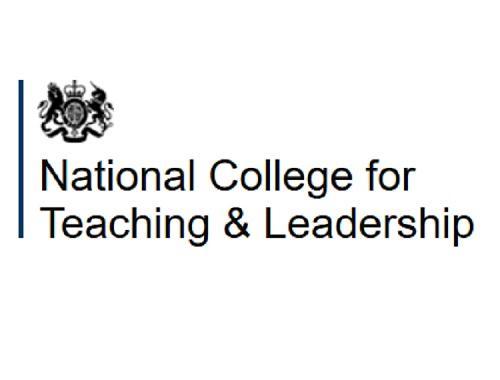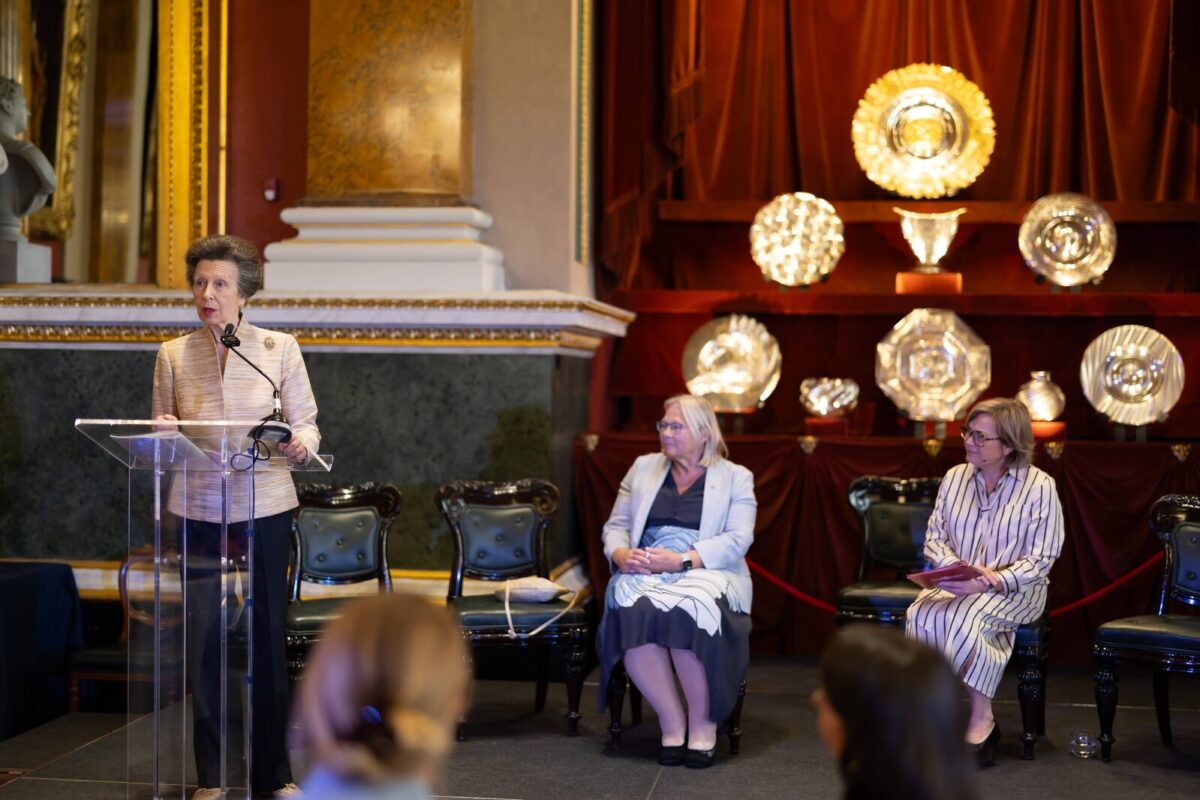Postgraduate teaching apprenticeships: guidance for providers and schools

National College for Teaching and Leadership (NCTL) today (3 Nov) updated their guidance on how to request and manage school-led initial teacher training (ITT) places for the postgraduate teaching apprenticeship.
The postgraduate teaching apprenticeship is a school-led initial teacher training (ITT) route that combines paid work with on- and off-the-job training, qualifications, and progression. It allows candidates to train to become qualified teachers. It will be available to trainees starting in September 2018.
The introduction of the postgraduate teaching apprenticeship does not affect current initial teacher training routes.
This information is for ITT providers and schools who would like to offer postgraduate teaching apprenticeships.
This guidance is not a replacement for independent advice and providers should ensure they take appropriate legal and other advice before making any changes to their teacher training offer. The Department for Education and the National College for Teaching and Leadership (NCTL) accept no liability whatsoever for any expense, liability, loss, claim or proceedings arising from reliance placed on this guidance.
If you are interested in applying to start your teacher training and want to know more about how to apply for a place on the postgraduate teaching apprenticeship, please visit Get into Teaching.
What’s involved
ITT providers and schools will decide the overall structure of the apprenticeship, but the apprentice must spend 20% of their time in off-the-job training, designed to build up their skills, knowledge and competence in the classroom.
Having completed their training, the apprentice must demonstrate the knowledge, skills and behaviours contained within the Teachers’ standards.
Apprentices will work towards attaining qualified teacher status (QTS). They will need to meet the apprenticeship standard and will need to pass an end-point assessment as required for all apprenticeships. The end goal is to become a qualified teacher.
During the apprenticeship programme, the apprentice must successfully complete a programme of ITT, leading to the award of QTS.
After completion of a course of ITT, you will assess whether the trainee has met the standards required to be awarded QTS, and make this recommendation to NCTL in the usual way.
The apprentice will then go on to complete an end-point assessment in their fourth term. This will help to consolidate their learning. An assessor from an end-point assessment organisation (an accredited ITT provider who has been separate from the training process) conducts the assessment, helping to quality assure their training and development. The assessment has 2 components: a lesson observation and a professional discussion. Both will increase the apprentice’s readiness for the profession. Details of on-programme activity is outlined in the approved end-point assessment.
You will need to record apprentices in the same way as other ITT routes, via the data management system (DMS) or Higher Education Data and Analysis (HESA) and on the individual learner record data so that they can be issued with a teacher training number (TRN) if not already issued.
Who can offer postgraduate teaching apprenticeships
Schools will employ apprentices, but only accredited ITT providers that have successfully registered on the register of apprenticeship training providers can deliver the off-the-job training for the teaching apprenticeship. Providers on this register can provide apprenticeship training to levy paying employers.
Training providers must decide with the employing school whether they want to offer an apprenticeship place. If working with a lead school in a School Direct partnership, training providers will need to agree with the employing school and the lead school whether to offer an apprenticeship place.
If you wish to provide the apprenticeship end-point assessment, you will also need to register on the register of end-point assessment organisations. You will need to register to deliver the end-point assessment irrespective of whether you have registered on the register of apprenticeship training providers.
Non-levy paying employers will be able to select a provider that has been successful in the Education and Skills Funding Agency’s recent procurement to deliver apprenticeship training to employers that do not pay the levy. The providers successful in the procurement are also able to enter into sub-contracting arrangements with other providers who did not participate in the procurement exercise. Further information is available on the update on procurement for non-levy paying employers.
Schools and School Direct partnerships
Schools interested in delivering the teaching apprenticeship may currently lead or be a member of a School Direct partnership. Where this is the case you will already have many of the processes in place that you will enable you to deliver the apprenticeship, though you will need to take account of the guidance on this page. Lead schools will also need update their partnership agreements and will need to sign a revised grant funding agreement.
If you are not currently in a School Direct partnership and would like to employ a teaching apprentice, NCTL recommend that you join an existing partnership. Schools that are not Ofsted grade 1 (outstanding) or grade 2 (good) for overall effectiveness must join a School Direct partnership to offer the apprenticeship.
Joining a School Direct partnership has clear benefits including greater opportunities to share expertise, meet the apprenticeship employment expectation, and implement efficient management and administration of the programme. It can also bring economies of scale in negotiations with teacher training providers and may allow you to access additional funding. For further details see the grant funding section.
You can identify the School Direct lead schools in your local area with allocated ITT places for 2018 to 2019 by viewing the list of initial teacher training allocations.
Schools that are rated grade 1 or grade 2 that do not wish to join an existing School Direct partnership, or are unable to do so, may wish to form a new partnership. To become a School Direct lead school, you should contact itt.allocations@education.gov.uk for advice on the criteria and process.
You may also offer the apprenticeship while not being part of a School Direct partnership, but must be rated grade 1 or grade 2 to do so. Schools that are not part of a School Direct partnership cannot access the grant funding available for the subjects in which a School Direct (salaried) grant is provided, for any apprentices they employ.
Applications
You can find out more about setting up and managing postgraduate teaching apprenticeship programmes through the UCAS Teacher Training scheme on the UCAS website. To access this, you will need to sign in to the secure providers’ section of UCAS. If you have not yet registered, you can do so on the UCAS website.
If you wish to offer an apprenticeship in place of a School Direct (salaried) place, you should ensure that it is clear on your UCAS profile that a School Direct (salaried) place may switch to an apprenticeship place. To do this your provider profile should state:
- changes to offered places, where they have been accepted, are voluntary, not imposed
- the academic year in which School Direct (salaried) places may change to apprenticeship places (2018 to 2019 academic year)
- how and when the provider will notify applicants of the change to places
Once you have decided whether you are offering an apprenticeship, please follow the instructions on the UCAS website. If you offer both School Direct (salaried) places and apprenticeship places, you will need to ensure both options are listed (you should ensure that any changes are done in accordance with the terms of use between UCAS and yourself). You should place an advert on recruit an apprentice, but all applications will continue to be channelled through UCAS Teacher Training.
Where you have already recruited an applicant to a School Direct (salaried) place, NCTL recommend that you have their agreement before changing the place to an apprenticeship place. If you have already offered an applicant a School Direct (salaried) place, you should not rescind your offer, unless you have clearly and explicitly reserved the right to do so. If you have already offered an applicant a School Direct (salaried) place, and the applicant has not yet accepted, you should consider carefully whether or not to rescind the offer. In particular, NCTL recommend checking the terms of the offer made before looking to change to an apprenticeship place. You should keep the applicant informed of any changes.
Allocation of ITT places
NCTL is responsible for the allocation of ITT places in England that attract government funding and lead to the award of QTS.
If schools wish to make use of School Direct (salaried) grant funding to offer the apprenticeship, they must take note of the information in this section on ITT allocations and in the grant funding section.
In general, for the purposes of offering the apprenticeship, ITT providers and School Direct lead schools should treat School Direct (salaried) places and apprenticeship places in the same way. Providers are able to offer and run both School Direct (salaried) and the apprenticeship simultaneously, and are able to choose how many of their School Direct (salaried) places they use as apprenticeship places for the 2018 to 2019 recruitment cycle. School Direct lead schools may be asked to inform NCTL about the number of apprenticeship places and School Direct (salaried) places which have been recruited to. NCTL will contact providers at a later date to inform them of this process.
ITT providers and School Direct lead schools should consider their unlimited and fixed allocations as outlined in the initial teacher training 2018 to 2019 allocations methodology when offering apprenticeships. NCTL communicated the allocation of places for School Direct (tuition fee), School Direct (salaried) and provider-led courses due to start in 2018 to 2019 in September 2017.
For the following information to apply, School Direct lead schools must be working with an accredited ITT provider that is registered on the register of apprenticeship training providers.
For current School Direct lead schools: subjects in which they currently have permission to recruit School Direct (salaried) trainees in 2018 to 2019
For unlimited School Direct (salaried) subjects, recruitment to the apprenticeship is unrestricted. Schools have automatic permission to recruit in unlimited subjects without first having to request additional places from NCTL.
For fixed School Direct (salaried) subjects, the following applies:
For primary apprenticeship places, School Direct lead schools will only receive grant funding for places that are part of their School Direct (salaried) allocation. They may, however, recruit additional apprentices above their allocation, provided they do not wish to claim grant funding for these trainees.
For PE there is no limit to the number of apprentices that School Direct lead schools can recruit, as there is no grant funding for these places.
For current School Direct lead schools: subjects in which they do not currently have permission to recruit School Direct (salaried) trainees in 2018 to 2019
Unlimited allocations: Schools that wish to recruit apprentices to subjects covered by unlimited allocations and access the grant funding associated with these places are able to do so, as recruitment to these subjects is unrestricted. This will enable them to access grant funding as outlined below. These schools will simply need to request permission to recruit in the relevant subject.
Please contact NCTL at itt.allocations@education.gov.uk to request permission to recruit in these subjects.
For fixed School Direct (salaried) subjects, the following applies
For primary School Direct (salaried) places, schools that did not request places in June of 2017 should contact NCTL with an expression of interest, specifying the name of their School Direct lead school, name of their accredited provider and an indication of the number of primary apprenticeship places they wish to offer.
Expressions of interest should be sent to teaching.apprenticeship@education.gov.uk.
Expressions of interest should be submitted no later than 12 January 2018. The outcome of this process will be shared with schools at the end of January 2018, once ITT providers have been confirmed on the register of apprenticeship training providers.
If you do not wish to access NCTL grant funding for primary apprenticeship places, you do not need to request places from NCTL.
For PE, there is no limit to the number of apprentices that School Direct lead schools can recruit, as there is no grant funding for these places.
Schools that wish to offer the apprenticeship but have not been involved in School Direct before
Schools that have not been involved in School Direct before should review the 2018 to 2019 allocations methodology to understand how NCTL allocates places to School Direct lead schools.
NCTL recommend that schools that have not been involved in School Direct before join an existing School Direct partnership. They should then work with their partnership to access apprenticeship places, using the guidance above.
Schools that are not involved in a School Direct partnership may wish to form a new one. To become a School Direct lead school, you should contact itt.allocations@education.gov.uk for advice on the criteria and process.
Schools that wish to offer the apprenticeship without joining a School Direct partnership or forming a new one will need to work with an accredited ITT provider that is registered on the register of apprenticeship training providers, adhere to the apprenticeship guidance and the initial teacher training criteria and supporting advice. These schools should also provide NCTL with details of the subjects and number of places that they wish to offer for apprenticeships. NCTL also recommend contacting NCTL for advice on delivering initial teacher training.
For further information on apprenticeship and School Direct (salaried) allocations please contact: itt.allocations@education.gov.uk.
Costs
The full costs of training and the trainee’s salary will need to be met by the School Direct partnership, or where a school is not part of a partnership costs must be met by the employer. Employers will be able to access funding as outlined below to help cover these costs.
There is a completion element for the apprenticeship which is 20% of either the total price of training or the funding band maximum, whichever is lower. This 20% is only released to the training provider when the apprentice completes their programme.
Funding to help meet the cost of an apprentice
Employers that pay into the apprenticeship levy will be able to use up to £9,000 of funding from their apprenticeship service account to cover the cost of training and assessing the apprentice.
The Education and Skills Funding Agency has set funding rules which detail what the funding can be spent on. The guidance also explains how employers that do not pay the levy or who have insufficient funds in their digital account can access funding to support the training and assessment of an apprentice. The government will pay 90% of the costs of training and assessment for the apprenticeship (up to the £9,000 apprenticeship funding band maximum) and the school will pay the remaining 10% for schools who either:
- do not pay the apprenticeship levy
- pay the levy but have used all of the funding in their digital apprenticeship accounts
Find out more about apprenticeship funding.
Grant funding
NCTL will provide grant funding to lead schools in School Direct partnerships employing postgraduate apprenticeship trainees. This grant funding is in addition to funding available from the Education and Skills Funding Agency and will be payable at the following rates:
|
Subjects |
National |
Inner London |
Outer London |
Fringe |
|
Chemistry, classics, computing, secondary mathematics, modern foreign languages, physics |
£12,500 |
£17,400 |
£16,100 |
£13,700 |
|
Primary mathematics, biology, design and technology, English, geography, history, music, religious education |
£7,500 |
£11,100 |
£10,100 |
£8,400 |
|
Primary |
£2,500 |
£4,900 |
£4,300 |
£3,100 |
All lead schools of partnerships offering apprenticeship places that attract funding as set out above in the academic year 2018 to 2019 and wish to receive such funding are required to enter into a grant funding agreement with NCTL.
Your accounting officer should complete the form and sign Annex A of the grant funding agreement and return the full document to gfa.nctl@education.gov.uk. NCTL will need to receive and accept this document before any funding is released. This is an agreement between the lead school and NCTL. It stipulates how you should treat the grant funding.
NCTL will publish the grant funding agreement in due course.
Apprentice salaries
Postgraduate teacher apprentices working in maintained schools must be paid in accordance with at least point one on the unqualified teachers’ pay scale for the period of their training. Further information is available in C4.1 of the initial teacher training criteria and supporting advice.
Non-maintained schools, academies and free schools have the freedom and flexibility to adopt pay arrangements that best reflect their local circumstances. They will need to ensure that pay rates are clearly advertised to the apprentice beforehand.
Apprentices should be paid as full-time employees.
Apprentice entry criteria
The entry criteria for postgraduate teaching apprenticeship will be the same as for other teacher training routes.
Applicants must have:
- the equivalent to a grade 4 in GCSE English and mathematics
- a degree awarded by a UK higher education provider, or a recognised equivalent qualification
- successfully completed the professional skills tests in numeracy and literacy
If trainees intend to train to teach pupils aged 3 to 11, they will also need a standard equivalent to a grade 4 GCSE in a science subject. More information is available in the apprenticeship standard.
Contact
Postgraduate teaching apprenticeships










Responses